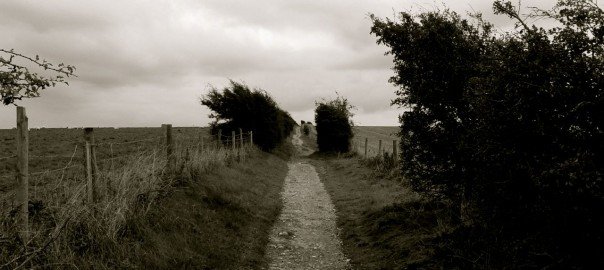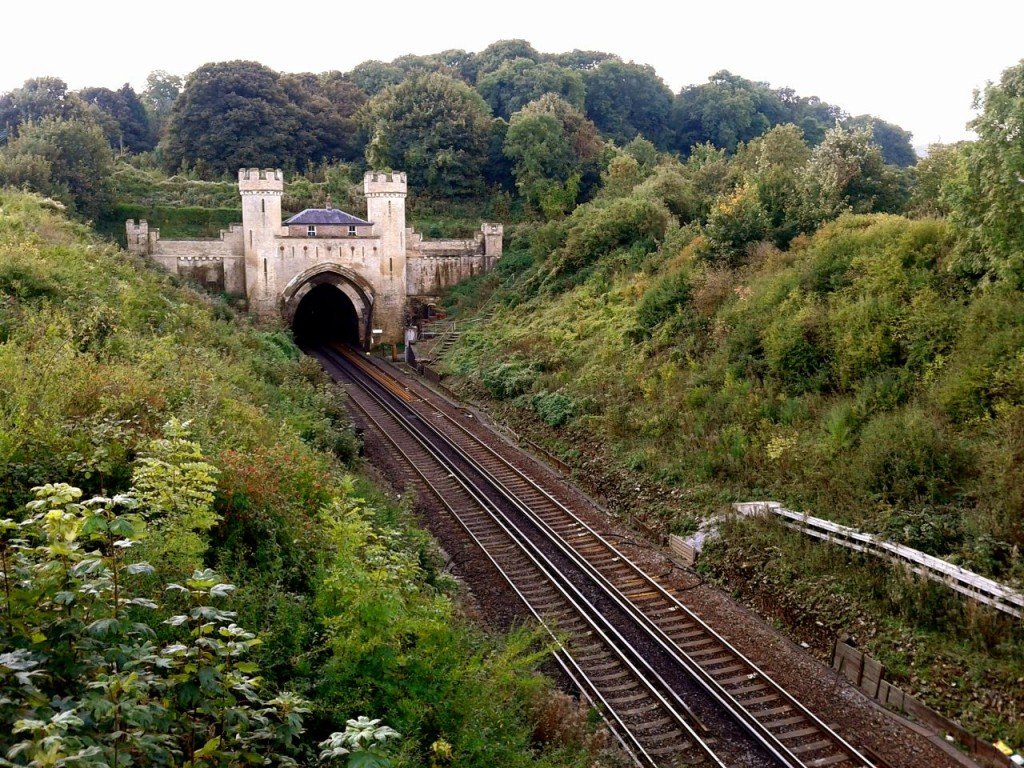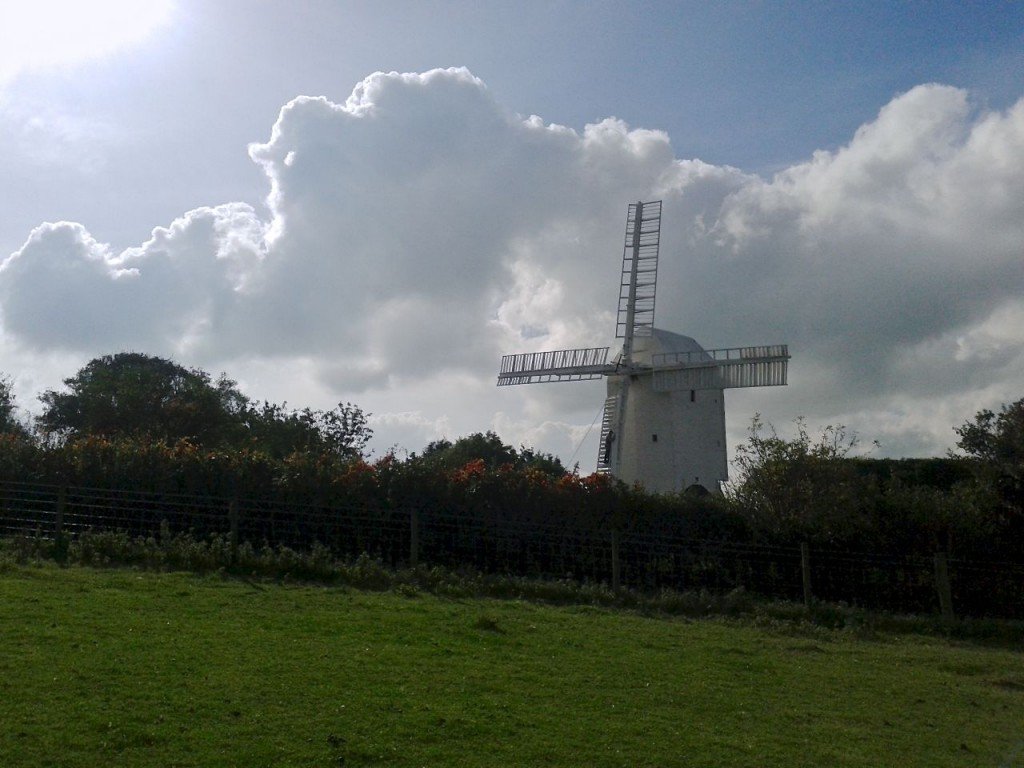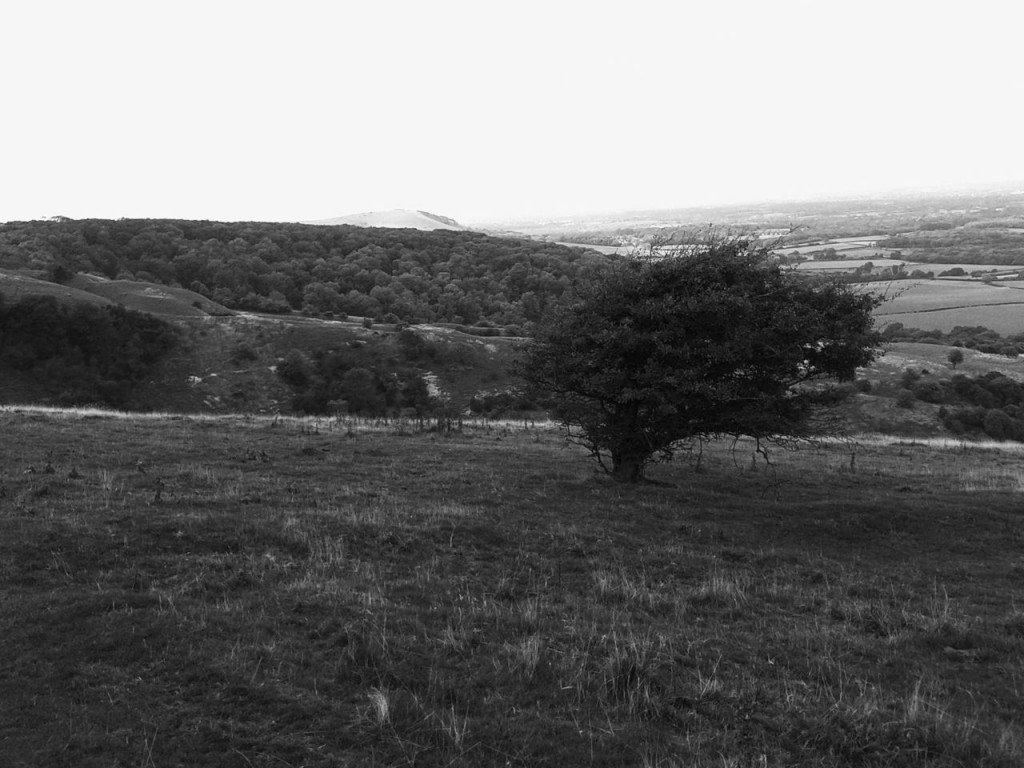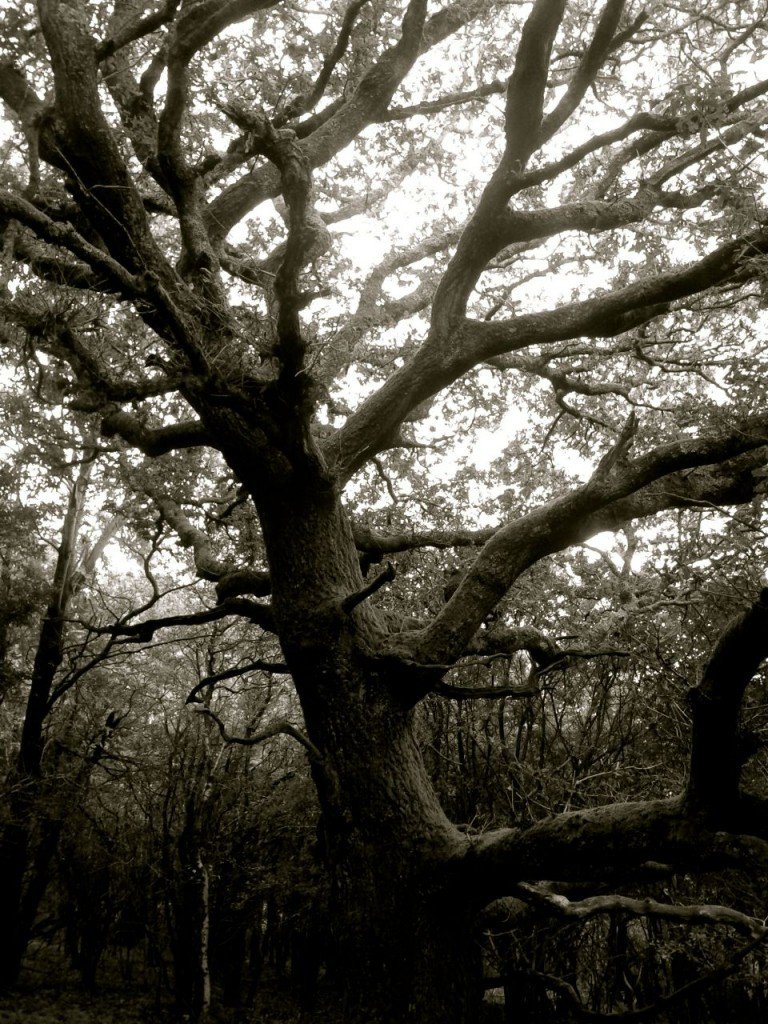Last Saturday I enjoyed a long, gentle walk along, over, around and across the south downs. Starting at Hassocks I traced a meandering perimeter around my home town of Brighton, enjoying unexpectedly bright weather and the gentle teasing chill of the first winds of winter. I was followed down from Hassocks to Clayton by a somewhat strange gentleman in board shorts and hoodie, who maintained a safe distance as might a (somewhat ineffective) spy going about reconnaissance. Emerging on to the A273 we parted ways however, as I paused to admire the northern exit from the Clayton tunnel, infamous for the horrific rail crash which resulted from a signalman’s failure on a Sunday morning in 1861. The tunnel exit is lovely though, with two turrets standing guard beside a privately owned cottage straddling the tunnel exit.
Onwards and upwards I clambered to the Jack and Jill windmills, a glimpse of which I often catch as we emerge from the tunnel on the train each morning. Atop Jill were a couple of American gents, who appeared to be up there to enjoy the view more than anything else – and why not?! I know now these were most likely members of the Jack and Jill Windmills Society , whose volunteers have been responsible for carrying out the incredible restoration work most evident on Jill, the white windmill (Jack is privately owned).
I was spurred onwards by the appearance of a somewhat elderly looking chap in jeans and workman’s polo shirt, who emerged from nowhere seemingly, smiling from a wrinkled olive-tanned face as he strode past me before breaking unexpectedly into a run, which he maintained until he was out of sight.
Now turning east along the wide chalk bridleway of the South Downs Way I walked under white clouds and intermittent bursts of blinding sunshine. I found my rhythm under duress as the light wind of the morning grew more confident in the afternoon. Spindly bushes and trees, tested by the constant bluster over the years, formed gravity-defying silhouettes against the bright backdrop of the autumn sky.
I sipped coffee from my thermos at Burnt House Pond, a dew pond, or mist pond, constructed to retain water for the grazing of sheep through the warm summer months. Whilst these ponds must certainly retain some water condensate from the dense disorientating fog and mist of the downs micro-climate, the vast majority is gathered from rainfall, the annual volume of which outstrips the evaporation significantly. But the names are evocative and I enjoyed my time beside the pond, sharing a moment with the birds and bushes enjoying the tiny hilltop oasis.
Past Ditchling beacon, with it’s concentration of dog walkers attracted to the nearby car park, I plodded on into the National Trust reserve at Blackcap. I ate lunch sheltering from a light rain under a comfy tree, polished off my coffee and ventured off the south downs way into the shallow valley of Ashcombe Bottom, with it’s feeders and fences offering a haven to hundreds of pheasants which roam the woodland, greeting the walker at every turn. Dipping off the well trodden path through the wood, I found a perfect tree for climbing, and setting my pack to one side I became a child for 15 minutes, learning the tree as I climbed it in as many ways as I could find, pausing to reflect on the sounds of the nature around me at the top.
And so on I plodded, down through the off-piste tracks of Ashcombe Bottom to rejoin the South Downs Way, across the long wound of the A27, bleeding noise over the landscape, and onward around the shallow bowl of Cold Coombes. Somewhere along the ridge over Front Hill, I crossed without fanfare from the Western to Eastern hemisphere, and turned off the Way down into Rodwell in hopes of enjoying a beer at the local pub. Fate had other plans, as it was at this point I thought to check the trains from Southease. Needless to say, they were infrequent, and so it was that I broke into a hesitant jog for the last mile or so down towards the somewhat famous swing bridge at Southease. The bridge, restored in 2010, was originally built in the late 19th century. Whilst it retains all the moving parts requisite for operation as a swing bridge, it was actually last opened in 1967, and today is a fantastic example of the engineering methods of the time – one can clearly see all of the mechanised components and imagine the bridge in action. I arrived in plenty of time to enjoy the sun setting behind the hills along which I had spent the day, illuminating the sky in a plethora of reds, pinks and oranges.
